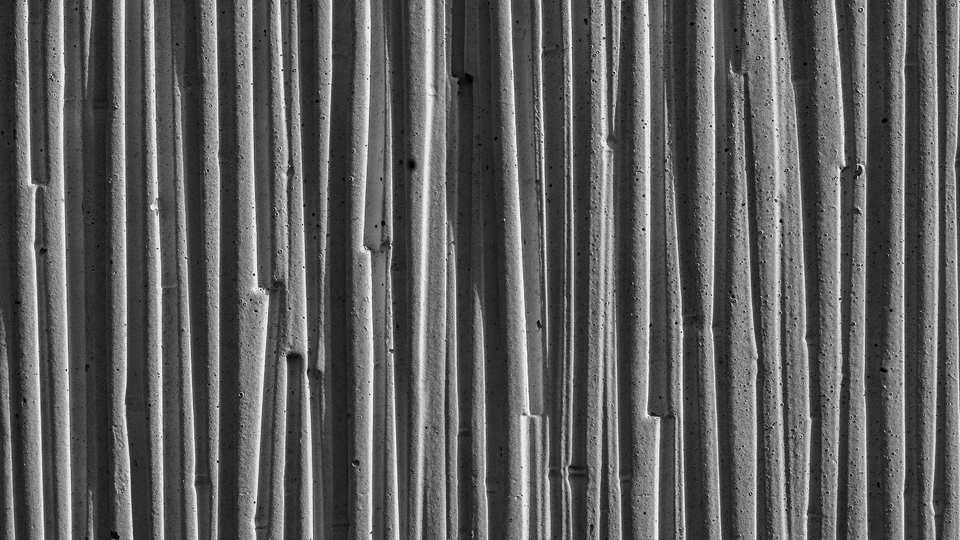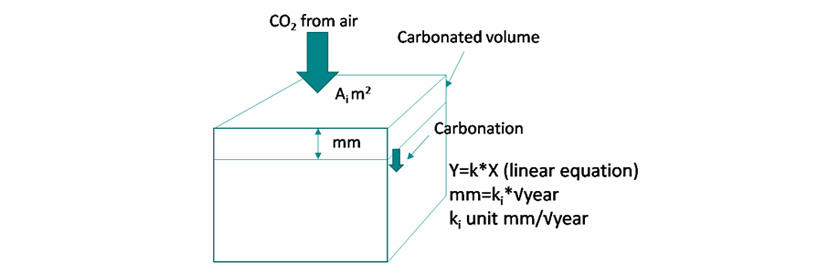
Tier 2 CO2 uptake models for concrete
Tier 2 provides a more advanced calculation method for estimating the annual uptake of CO2 in existing concrete structures (primary use) on a national basis.
The model should be used primarily in cases where resources are missing to perform a more accurate calculation according to a future Tier 3 model, yet knowledge exists to perform a more advanced and improved CO2 uptake model than the simplified model offered in Tier 1. According to IPCC rules, Tier 2 or 3 should also replace Tier 1 if the uptake in the country is defined as a “key category”. However, in this model, a more simplified calculation of the CO2 uptake in existing (old) concrete structures is used compared to a Tier 3 method and referred to as an Onward calculation method. The national annual CO2 uptake in concrete; in the primary use stage (existing structures), in the end-of-life stage (demolition, crushing, stockpiling), and in secondary use (recycling), can be estimated according to this methodology for Tier 2.
To be able to make an improved estimate of the annual CO2 uptake, one needs a good overview and knowledge of the existing concrete product stock in the country or region in question, since it is in these structure’s surface area that the CO2 uptake takes place. The inventories of existing concrete structures comprise different product applications, its specific concrete surface area, concrete exposure conditions, and concrete quality. The age distribution of concrete in place is estimated by cement consumption and cement type statistics over time. The methods used in different countries are all based on the well-accepted and documented carbonation rate model of square root of time dependency shown below. This makes it possible to estimate the annual CO2 uptake in existing structures. The calculation according to Tier 2 of the annual CO2 uptake in the building stock for a certain year, is done according to the “onward calculation method”
Onward calculation
To simplify the uptake calculations, it has been assumed in Tier 2 that the uptake of CO2 the present year can be equated with the uptake of CO2 for 100 years in the current distribution of concrete products and structures, and with the current year's concrete production. In reality, this year's uptake of CO2 takes place in today's standing concrete products and structures and in concrete produced during the last 100 years. This approximation is thus relatively good provided that the concrete production has been fairly stable over the years. If greater variations in concrete production have occurred, this calculation method can be improved by using a rolling average value of the use of concrete or clinker over a longer period of time.
The primary use stage CO2 uptake calculations used in Tier 2 is based on the calculation model presented in the European standard CEN/EN 16757, Annex BB. A schematic figure of the uptake principles is shown in the figure below.

The figure shows the CO2 uptake process in a concrete block.
The CO2 uptake in kg for application i during t years can be calculated as:

Which can be explained as follows:
- CO2-uptake is the total CO2 uptake in kg CO2 during t years
- ki is a constant factor for the rate of carbonation for surface i in mm/√(t)
- DOCi is the degree of carbonation for surface/volume i
- Ai is the area of carbonation surface i in m2
- t is the number of years from start of carbonation
- Utcc is the maximum theoretical uptake in kg CO2/kg clinker. A default value for clinker can be 0.538
- C is clinker content in kg clinker/m3 of concrete
Values of k and DOC can, for example, be found in CEN/EN 16757, Annex BB. In that standard, correction factors for k due to use of additions in the concrete such as limestone, silica fume, siliceous coal fly ash or/and ground granulated blast furnace slag (GGBS) can also be found.
The CO2 uptake for end-of-life processes and secondary use is calculated as in Tier 1.
In the figure, it is shown that the carbonation takes place at the surface of the concrete and proceeds inwards from the surface with a rate that is decreasing with a linear time scale but constant with a square root of time scale. The carbonation depth is accordingly directly proportional to √year. The uptake calculation is based on calculating the carbonated volume of the concrete structure (from ki*DOCi*√year*Ai) and then multiplying this volume with the CO2 calcination emission from the clinker (kg CO2/kg clinker) and the clinker content in the concrete (kg clinker/m3 concrete).
Due to the uptake calculation simplifications (Onwards calculations), it is anticipated that the uptake during one year in existing buildings is equal to the uptake over the next (100) years in the concrete produced during the present year. If large national variations in the clinker use exists, it is recommended that a rolling average value for the clinker use is used in the calculations. The rolling average shall cover 20 years.

